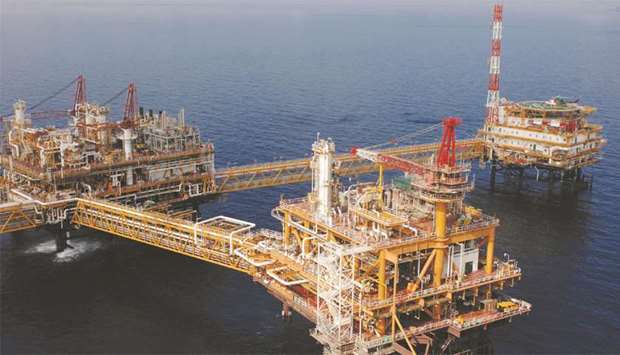Qatar’s budget is estimated to produce a large surplus in 2020 and the country’s external position will continue to remain solid thanks to the large sums in its foreign reserves and sovereign wealth fund, leading credit insurer Coface has said in a report.
The country’s fiscal balances are on track with “solid” financial buffers, Coface said in its latest economic update.
Despite the blockade on the country by a quartet of Arab nations, the country’s “business environment has improved thanks to the construction of new transportation infrastructure” ahead of the World Cup, the report noted.
The government continues with its efforts to boost private sector through economic diversification which creates new business opportunities. The issuance of a long awaited public-private partnership (PPP) law, which was already approved by the Cabinet in April 2019, would support the development of the private sector, Coface said.
Growth is expected to pick up slightly in 2020, although it would “remain below” its average of 12.6% between 2005/2014, despite slowing activity in the mining and quarrying sector, which accounts nearly for half of GDP. Construction sector will also continue to show “weakness” as long-term infrastructure projects have now neared completion.
The budget allocation for major projects in leading sectors such as healthcare, education, transportation and others related to the hosting of the World Cup 2022, underlines the importance of government spending to sustain growth, the report said.
Over the next few quarters, hydrocarbon production, which accounts for roughly half of GDP, may “slow down” due to contracting natural gas production.
Yet, by the end of 2020, it may start to increase through the Barzan Gas and North Fields expansion projects, if they become operational. Private consumption, which represents only 25% of GDP, will continue to “contribute positively” to growth, as it would be backed by public sector wages, according to the report.
Prospects, however, will “remain challenging” for the manufacturing sector that contracted by 7.4% in Q2, 2019 from a year earlier due to the blockade since mid-2017.
On the other hand, with the Qatari riyal remaining pegged to the dollar, the Qatar Central Bank is expected to follow the footsteps of the US Federal Reserve in cutting its rates in the coming quarters. However, credit growth would remain limited thanks to the limited demand from the public sector and a weak construction sector.
But, Coface noted that global recession risks and weaker demand for oil are expected to lower oil prices, which in return can be a “drag” on the revenue side. Between 1990 and 2018, hydrocarbon revenues averaged about 90% of total fiscal revenues.
In case of the worsening of global uncertainties, Qatar’s fiscal performance would be impacted on decreasing oil prices, as it would push the government to increase its counter cyclical spending. However, Qatar has “enough financial buffers to withstand against global shocks,” Coface noted.
Despite the blockade on the country by a quartet of Arab nations, the country’s “business environment has improved thanks to the construction of new transportation infrastructure” ahead of the World Cup, the report noted.
The government continues with its efforts to boost private sector through economic diversification which creates new business opportunities. The issuance of a long awaited public-private partnership (PPP) law, which was already approved by the Cabinet in April 2019, would support the development of the private sector, Coface said.
Growth is expected to pick up slightly in 2020, although it would “remain below” its average of 12.6% between 2005/2014, despite slowing activity in the mining and quarrying sector, which accounts nearly for half of GDP. Construction sector will also continue to show “weakness” as long-term infrastructure projects have now neared completion.
The budget allocation for major projects in leading sectors such as healthcare, education, transportation and others related to the hosting of the World Cup 2022, underlines the importance of government spending to sustain growth, the report said.
Over the next few quarters, hydrocarbon production, which accounts for roughly half of GDP, may “slow down” due to contracting natural gas production.
Yet, by the end of 2020, it may start to increase through the Barzan Gas and North Fields expansion projects, if they become operational. Private consumption, which represents only 25% of GDP, will continue to “contribute positively” to growth, as it would be backed by public sector wages, according to the report.
Prospects, however, will “remain challenging” for the manufacturing sector that contracted by 7.4% in Q2, 2019 from a year earlier due to the blockade since mid-2017.
On the other hand, with the Qatari riyal remaining pegged to the dollar, the Qatar Central Bank is expected to follow the footsteps of the US Federal Reserve in cutting its rates in the coming quarters. However, credit growth would remain limited thanks to the limited demand from the public sector and a weak construction sector.
But, Coface noted that global recession risks and weaker demand for oil are expected to lower oil prices, which in return can be a “drag” on the revenue side. Between 1990 and 2018, hydrocarbon revenues averaged about 90% of total fiscal revenues.
In case of the worsening of global uncertainties, Qatar’s fiscal performance would be impacted on decreasing oil prices, as it would push the government to increase its counter cyclical spending. However, Qatar has “enough financial buffers to withstand against global shocks,” Coface noted.




